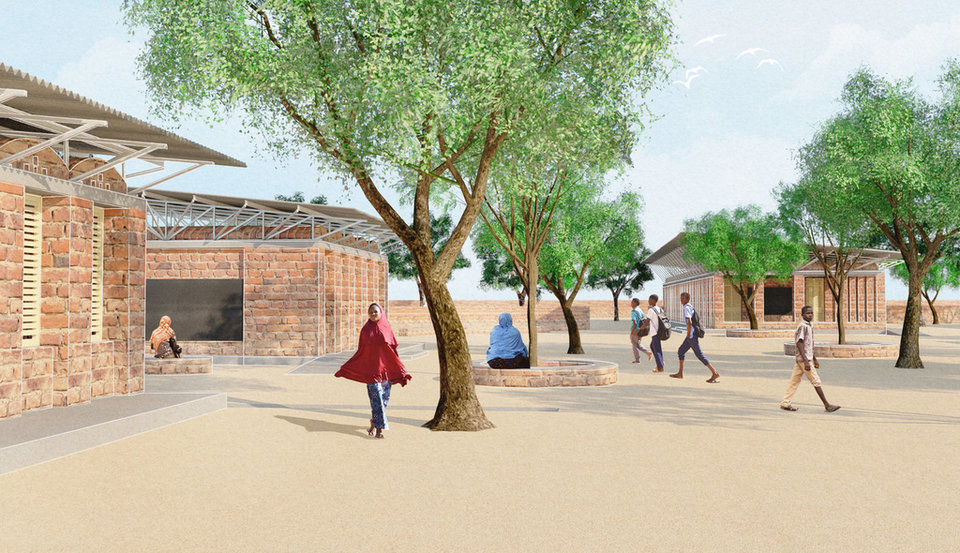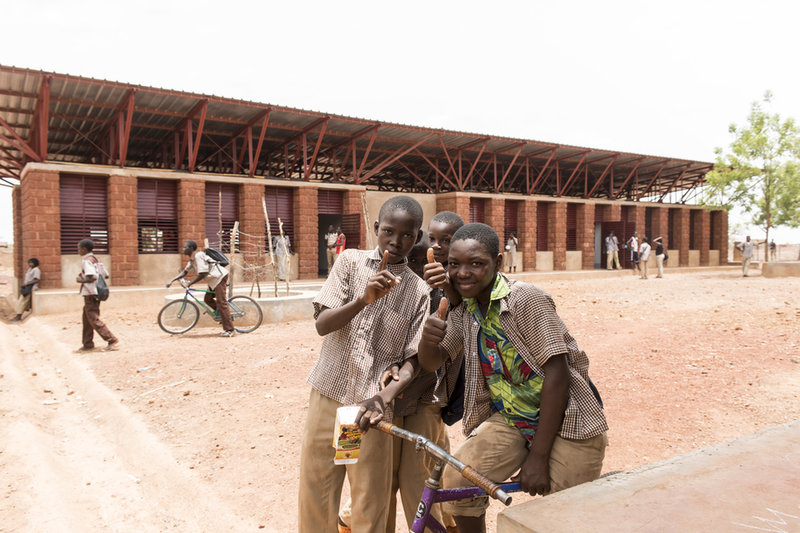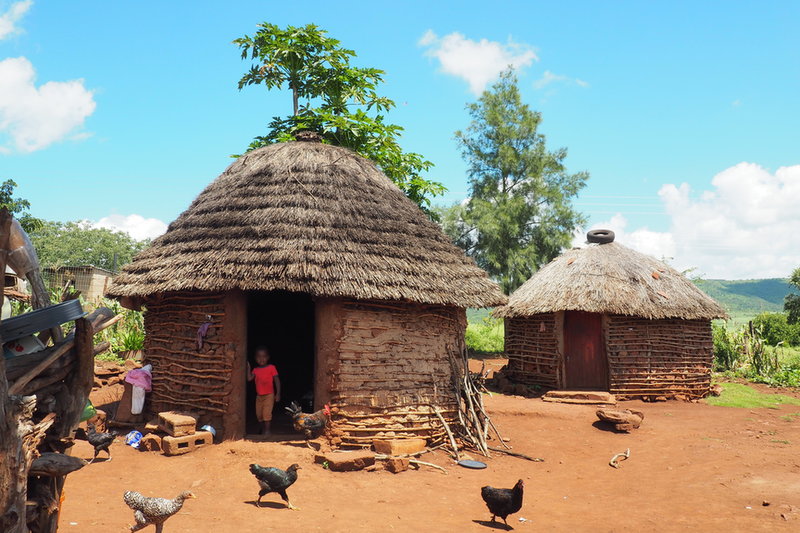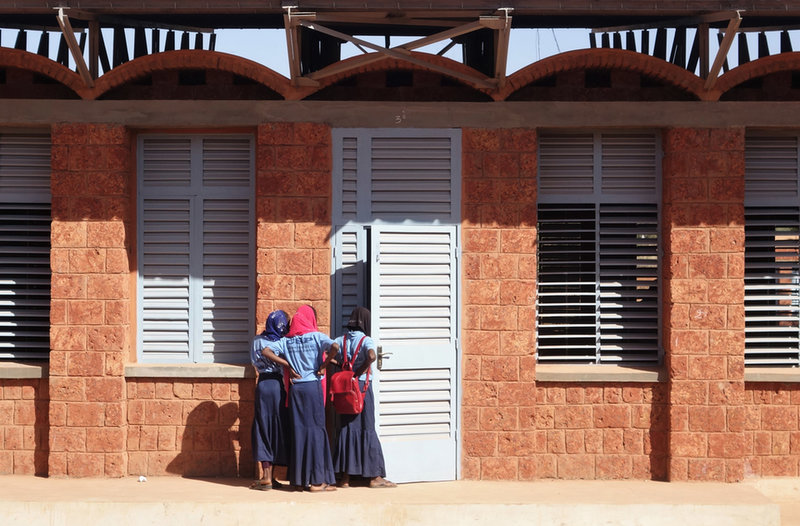Impact
Humanitarian architecture: creating social value for communities
Architecture directly impacts lives and communities, so it’s paramount to consider social value, writes Bea Sennewald, director of projects at Article 25.

E
very building represents an opportunity to enhance the social life of the community in which it’s built. This is true across the world, but Article 25, through its work building humanitarian architecture in developing countries, has come to understand this point through direct experience.
The structures we build provide access to healthcare, education and a safe place to live in locations where these facilities – which much of the developed world takes for granted – often did not exist beforehand. But architecture has the possibility to do so much more: a big opportunity lies in the development of the brief.
Bea Sennewald, director of projects at Article 25
Bea Sennewald, director of projects at Article 25
Creating social value through added functions
When designing a school, for example, an architect should consider the function of the building within the local community. It’s important to ask the community directly about extra features that can enhance the social value of the project.
For instance, adult literacy classes could be added to the brief of a school in an area with low literacy rates. Designing the dining hall to double as a function room to host community and family events is also a possibility. Workshops could be blended with vocational training in order to generate an income stream for the building’s long-term future.
The type of building also creates new opportunities to generate social value. Hospital maternity wings often host expectant mothers who have travelled long distances. Since they need to arrive well before their due date and spend the final weeks of their pregnancy at the hospital, the installation of comfortable living quarters for them and their companions allows for important socialisation where young mothers can support each other, trade tips and can learn the basics of baby nutrition, immunisations and care.

Bethel secondary school in Burkina Faso is one of Article 25’s school projects in West Africa.
Considering the community’s needs
Architectural design doesn’t simply stop outside a building’s walls. Many of Article 25’s projects are located in areas without the functioning infrastructure for delivering water or electricity.
For example, if it becomes necessary to dig a well in order to serve the building, we can situate the well in a central location so the whole village or neighbourhood can use it. This can create a domino effect of social value creation: the well may become an important hub for community socialising, and because young girls don’t have to spend hours carrying buckets of water from a river, education rates among local women will improve.
In a place where there are no pubs, cinemas or cafes, that football pitch can become the centre of social life of the village.
There’s one more often overlooked question that we like to ask: how can we add some fun? Through experience we have often found that a football pitch is a perfect response. It’s an incredibly inexpensive solution that provides huge social value.
Children will use the pitch every single day; before long, dads will have a go on a Saturday, and pretty soon there are regular matches with family picnics. In a place where there are no pubs, cinemas or cafes that football pitch can become the centre of social life of the village.
But these are simply examples – each project is unique and the particularities of a locality need to be taken into account.

A home improvement project in Lomahasha, Eswatini
Assessing social value throughout all project stages
Social value can also be considered at every stage of the project, not just building design. Through the process of consultation itself, the local community is given a voice, and the resultant project will cater more closely to their specific needs and give them ownership of the building.
And after design is completed, providing some training will help people to get the most out of their buildings. Post-occupancy evaluation also provides a regular stream of feedback to adapt the building to offer greater social value. While social value may seem an intangible concept, these evaluations can rely on hard, quantitative data to ascertain just how valuable a building is to the wider society.
The Social Value Toolkit for Architecture, produced by RIBA and the University of Reading, is a great starting point for any architects considering social value in their design. The guide explains how surveys can quantify responses along a number of subjects: whether a building elicits positive emotions, how connected locals feel to the building, and levels of participation, freedom and flexibility.

Students at the Collège Amadou Hampaté Bâ in Niger, a school where Article 25 carried out an expansion project. Credit: Article 25 / Toby Pear
Social value matters anywhere in the world
Article 25’s focus is primarily in Africa and Asia, but the same principles are applicable everywhere. Urban development in cities in the UK should ask a similar set of questions.
Schools can beneficially integrate with local businesses, and football pitches or other sports facilities bring real value to housing estates regardless of location. There are always architectural solutions that can bring social value to communities.
But there needs to be a sea change in how we collectively think about social value. It hasn’t been viewed as an important return on real estate investment on the same level as simple financial income.
In the UK, Section 106 contributions are used to ‘mitigate the negative impacts of development’, rather than contribute toward social value in a positive and meaningful way. And for all the talk about ESG, the ‘S’ is still dwarfed by the ‘E’.
There are lessons to be learned from Article 25’s work building crucial humanitarian architecture in communities in countries and regions that need them most. Without considering social value, architectural design is a hollow endeavour.
Main image: Concept image of Collège Amadou Hampaté Bâ, one of Article 25’s school projects. Credit (all images): Article 25